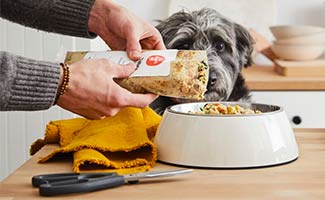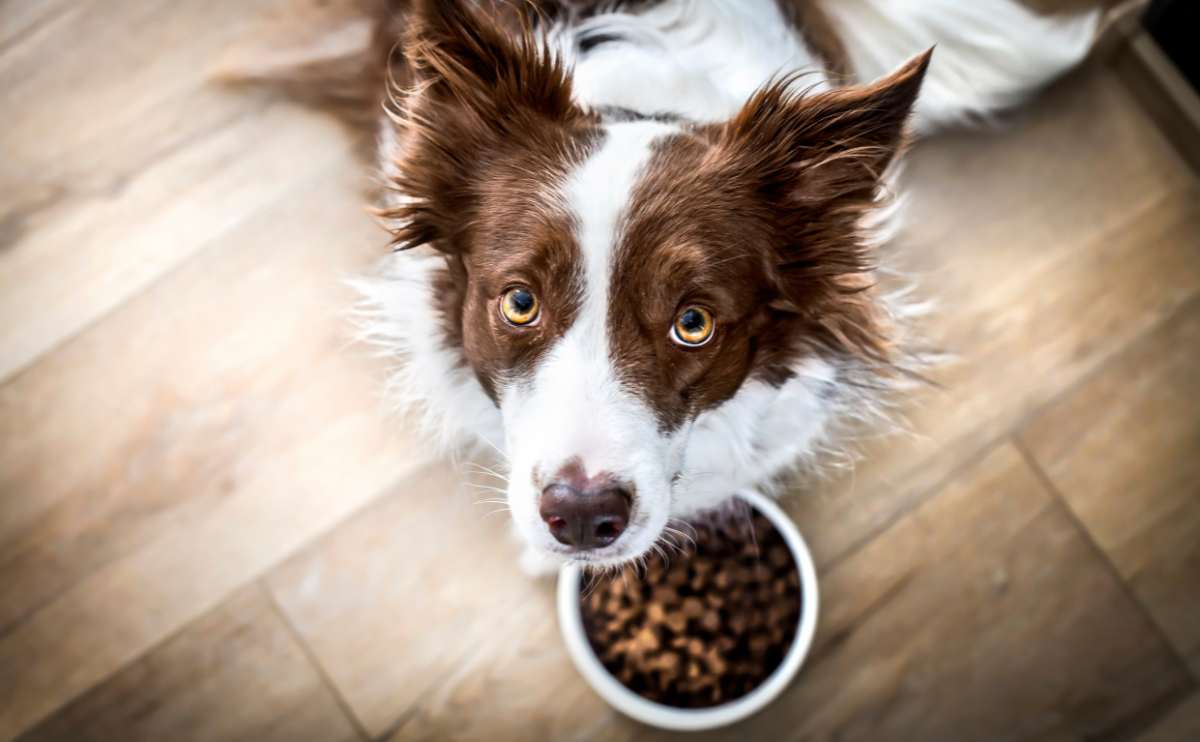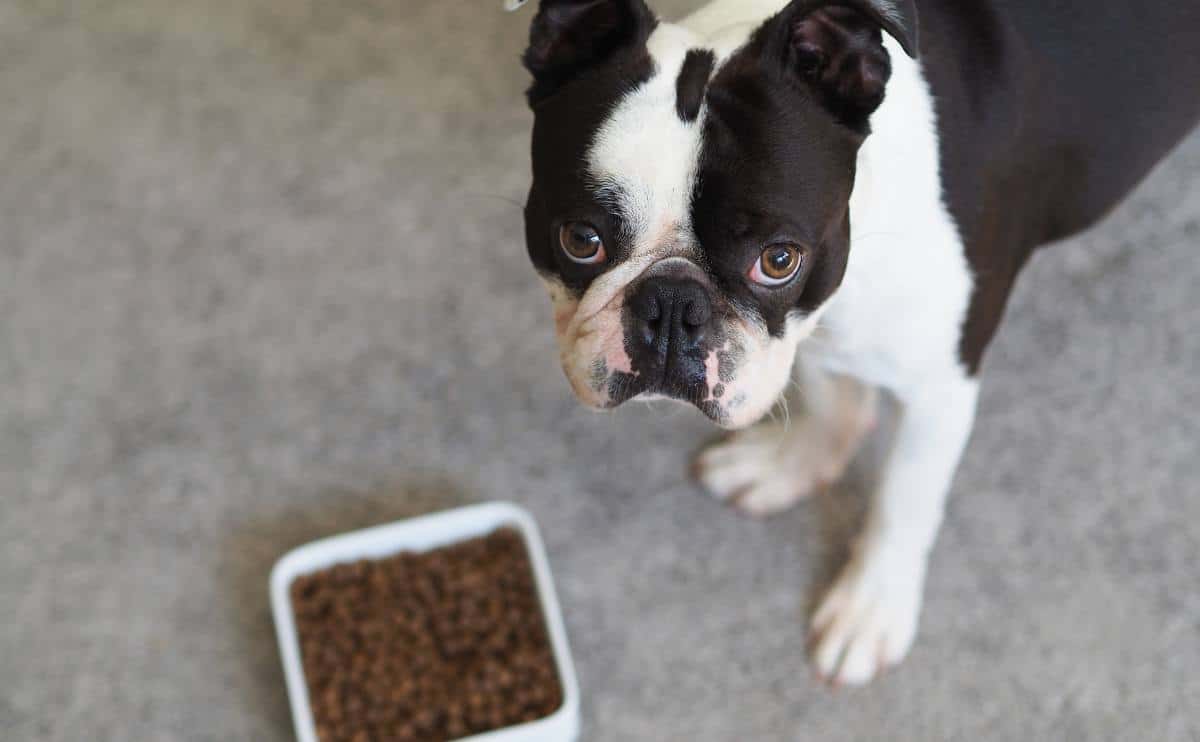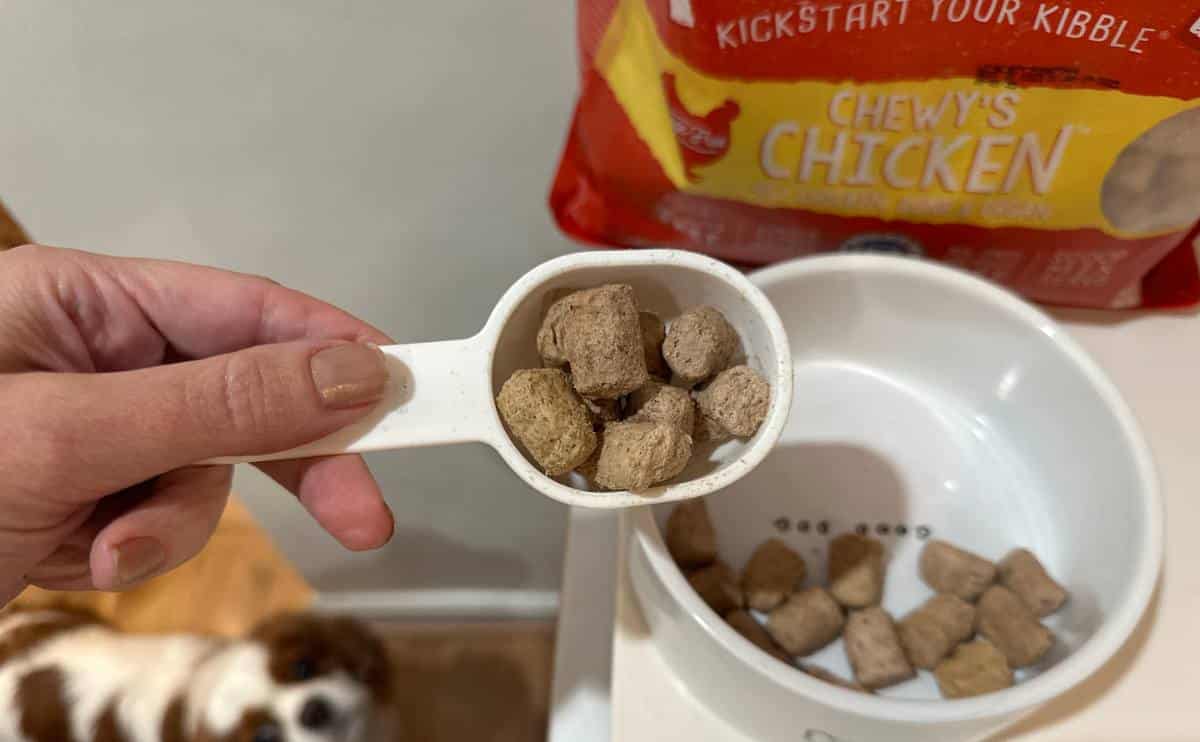When you purchase through links on our site, we may earn a commission. Here’s how it works.

Eating isn’t a race, but explaining that to our dogs is easier said than done. Guzzling food can result in choking, vomiting, and even bloating. However, you can help slow your dog down and try to prevent these things from happening. I’ll share some tips on how to stop your pup from inhaling his food.
Why Is It Bad For A Dog To Eat Fast?
Eating too fast can cause a lot of health problems for our furry friends. Not only can it cause them to gag and vomit, but scarfing down food can also cause life-threatening choking. Fast eating can also lead to a deadly condition called canine bloat or gastric dilatation-volvulus (GDV). Gastric dilation occurs when a dog swallows too much air when gulping down food.
The excessive air and gasses cause the stomach to balloon and twist within the abdomen. This twisting obstructs blood supply to major organs and impacts blood flow throughout the whole body. Canine bloat is an immediate, life-threatening emergency that results in death if untreated. While any dog can develop GDV, large, barrel-chested dogs, such as German Shepherds and Great Danes, are more at risk.
What Do I Do If My Dog Eats Too Fast And Throws Up? 8 Tips To Try
If your dog eats too fast and then vomits (or worse), you need to remediate the issue not only because cleaning up dog vomit around your house is a smelly, messy job, but also because your dog’s stomach is now empty. Then, he’s more likely to eat fast at the next meal due to his extreme hunger. I have several ideas you can try at home to slow your dog’s eating down.
1. Use A Slow Feeder Dog Bowl

A slow-feeder dog bowl is like a maze for your dog’s food. Several members of Canine Journal use these for their gluttonous pups with great success. They are very effective with eaters who will not slow down, regardless of other methods tried.
2. Add A Slow-Feed Ball To Your Dog’s Food Bowl
Slow-feeder bowls don’t work for all dogs, but some pup parents find slow-feed balls quite effective. The balls serve as an obstacle to help inhibit gulping large amounts of food at once. They come in various sizes and are heavy enough that many dogs can’t just nudge them out of the bowl.
Our First-Hand Experience With Slow Feeder Balls
“We use the KUNWU Stainless Steel Dog Food Slow Feeder Ball with our Cavalier King Charles Spaniel who loves to gobble up his food quickly. The ball is smooth and slippery, making it difficult for him to remove it from his bowl. The ball forces him to eat around it, making gobbling chow down much harder. He eats much slower with this ball and loves that we can use our existing dog bowl with it (or on the go with a travel bowl).”
– Sadie Cornelius, Cavalier Parent, Creative & Content Marketing for Canine Journal
3. Try Food Puzzles
Puzzle or maze feeders, like the Potaroma Dog Puzzle Toy, are a fantastic alternative if slow-feeder bowls or balls don’t do the trick. They obstruct the chance of large gulps by making your pup work for his food. Puzzle toys are also a perfect way to keep your canine companion mentally stimulated.
4. Load A Snuffle Mat

A snuffle mat is an interactive toy that lets your dog sniff out and eat, rather than gulp, his food. The mat has fleece strips that hide pieces of kibble for your dog to find. This can help slow your dog down and can be an excellent way to relieve stress and release excess energy.
5. Cookie Sheet Trick
Spread your dog’s food out onto a large cookie sheet. This makes it so he has to hunt for his food. With each bite he takes, he will get less food in his mouth than if it were piled on top of itself in a dog bowl.
6. Muffin Tin & Tennis Balls
Put your dog’s kibble in a muffin tin and cover it with tennis balls. This will slow your dog’s eating down and act as a fun brain activity for him.
7. Split Meals Up
Changing your pup’s meal habits may help with vomiting or minimize the risk of canine bloat. Try to give your dog smaller, more frequent feedings if your schedule allows. For example, if you typically feed your dog once in the morning and again in the evening, try splitting those two meals into three by adding a meal around noon.
Remember to give your pup the same amount of food during those three meals as you initially did with two meals, so you don’t overfeed your dog and cause him to be obese. So if you give your dog one cup of food in the morning and one cup in the evening, then you could give him 3/4 cup in the morning, 1/2 cup around noon, and 3/4 cup in the evening.
8. Moisten Your Dog’s Food

If you give your dog kibble, adding canned wet food or a little water to it can help slow him down. The water can also help hydrate him. You can also consider changing to fresh dog food, like The Farmer’s Dog, which is typically more easily digestible than kibble.
Frequently Asked Questions
Here are some questions pup parents ask most often about speed eating. Don’t see yours here? Ask me in our comments section.
How Do You Teach A Dog To Eat Slower?
Fast eating isn’t normally a behavioral problem that you can just train out of a dog. Professional dog trainers most often recommend slow-feeder methods to curb fast eating.
How Do I Get My Dog To Stop Eating So Fast?
Again, the solution comes down to the way you feed your pup. If the methods I’ve suggested aren’t working. You may want to consider hand feeding or spreading out your pup’s kibble on the floor throughout your house.
Why Does My Dog Act Like He’s Starving When He Eats?
Unfortunately, some dogs have a seemingly insatiable appetite — that’s just the way they’re wired. Genetics can play a part. Some notorious food-obsessed breeds include Labrador Retrievers, Beagles, Dachshunds, Pugs, Basset Hounds, Rottweilers, Pembroke Welsh Corgis, and more.
However, a voracious appetite can sometimes be a sign of an underlying health problem, such as internal parasites, anxiety or stress, diabetes, hypoglycemia, or cancer. If your pup’s appetite has increased, it’s best to contact your vet to rule out any health issues.
Vet Intervention May Be Necessary
If your dog is still vomiting, there could be other things causing it. Our dog vomiting article may be helpful to you, but I also recommend talking to your veterinarian about your dog’s health status.
Did you know that pet insurance covers gastrointestinal issues like vomiting if they aren’t related to pre-existing conditions? Pet insurance covers many other things like accidents, illnesses, canine bloat, and more. By enrolling your dog in a pet insurance policy, you’re more able to afford the best vet care for him should he need it. Find out if pet insurance is worth it for your dog.
Why Trust Canine Journal?
Sally has over 20 years of experience in human health sciences communications, including 10 years as an expert on pet health conditions and treatment. She’s also spent over a decade researching dog behavior and training methods as part of an expert team at Canine Journal. As dedicated canine professionals and long-time dog owners, we test and research the best pet products and solutions to common dog concerns, not only for our own pups but for all of our readers.
Tagged With: Gastrointestinal

